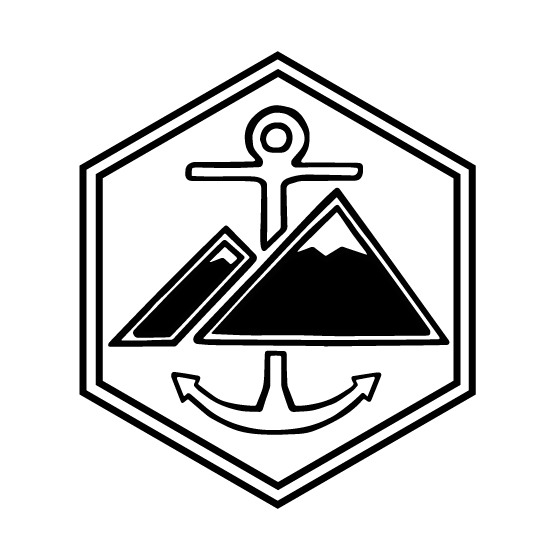The last stretch of desert before the central California section of the PCT is a doozy. We loved hiking through some exotic and interesting wilderness so far - remote desert, burned forest, high mountains - each treated us well except the wind farms.
The farms were smattered across our path from day 30 - day 36, almost the end of the Southern California section. We had nearly reached the Sierra Nevada mountains, but the desert wasn't done with us quite yet.
We arrived at a strange pit stop called Hikertown on day 30. The owners had a large garage they had converted into a hiker hang out, but they had also constructed what seemed to be an old west town. I mean a line of small shops, post office, a little city hall, and even a little jail. All these constructions were around 3/4 scale - large enough to enter, but not full size buildings. Oh, and the owners use the jail as a chicken coup. An interesting place, but they had ice cream, water and a place to get out of the sun because after Hikertown we had to cross the Mojave.
Pedi captures Hikertown's sheriff building and a few other parts of the miniature old west town.
In the evening of day 30 we left Hikertown. We walked along an aqueduct overnight to cross the Mojave Desert - it was a long flat stretch that would have been unbearable during the day due to intense heat and sun. After that it was the wind farms. Our night hike placed us right at the beginning of a cluster of turbines. Innocent, clean, white and a symbol of renewable energy, at first I thought they were elegant.
I caught Pedi walking on the aqueduct at sunset.
The aqueduct. Photo credit: Jonathan
That first night I realized what could be obvious about hiking and sleeping by wind turbines: extremely high winds, we rarely found great shelter, and water sources were many miles apart. Great way to ring in our first month on the trail.
On day 32 we hiked through some of the largest wind power installations in the country. Luckily we made it to a highway so the four of us could hitch into Tehachapi to get more food. Also, the nonstop 40 mph gusts might have driven me insane. A couple trail angels helped us get to and from town, they took us to the restaurant they owned, called the Apple Shed, and told us stories about Tehachapi (incredibly kind, interesting people). Then it was back to the wind.
Side of the Apple Shed.
On day 33, Quinoa was nearly blown off the first mountain we ascended as we left Tehachapi. I was getting tossed side to side with each step. I thought I was going to break a trekking pole as I used them to cling to the rocky trail. We slept in a ditch using our packs as windbreaks. The gale force winds stole Pedi's hat. As we crossed the Tehachapi valley we were beginning to leave the desert, but it felt like the desert wasn't finished with us.
Areas of high wind just after the Mojave section.
The trail angels from Tehachapi informed us we had reached the transference region - where two mountain ranges met, separated by Tehachapi Valley. This signified a kind of boundary between the desert (San Gabriel Mountains) and the Sierra. The ending of Act 1, of sorts.
On day 34 we climbed in altitude and saw the high Sierra in the distance. We were getting out of the constant wind and dryness. Our group of four was excited for what was coming.
Day 35 was hot; we had to gain elevation while hiking in wind and loose sand. Still the turbines seemed to haunt us. Finally as the morning wore on we had reached Walker Pass, and even though it rained we were only two days away from Kennedy Meadows, our last resupply before the high Sierra. Also of note, we met (The) Yogi, kind of a PCT celeb as she was getting ready to cook pancakes for thru-hikers at Walker Pass.
Day 36 we climbed Bird Spring Pass and had two more days to the end of the Southern California section of the PCT. Our destination was Kennedy Meadows. We hiked 25 then 27 miles days with ever-lighter packs, inspired by what was coming. As we arrived in Kennedy Meadows the Central California section started, we had completed over a quarter of the trek.
Dan hiking towards Hikertown. Photo credit: Jonathan
Happy hiking!
Dan







